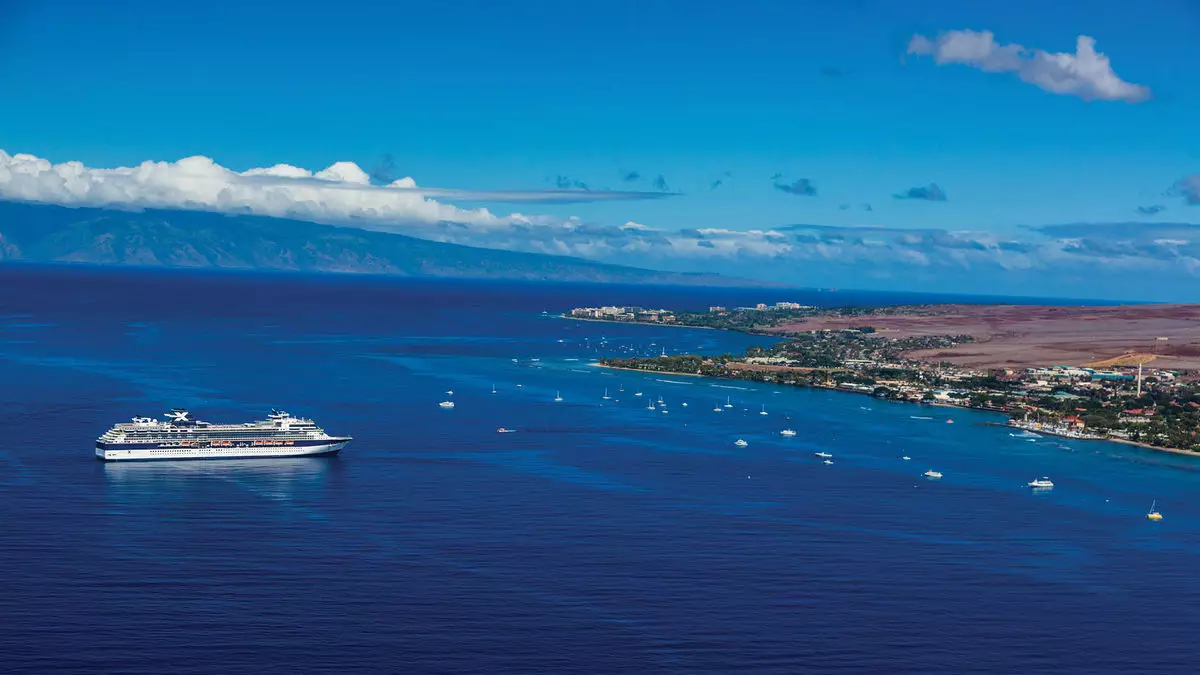Hawaii’s bold initiative to curb cruise ship traffic reflects an urgent acknowledgment of the environmental toll of tourism and maritime activities. The proposed plan to slash cruise calls by 50% by 2030 and further by another 50% by 2035 signifies a radical shift from traditional industry practices. This isn’t simply about reducing numbers; it’s a deliberate stride towards transforming the very nature of Hawaii’s marine transportation system. The emphasis on reducing greenhouse emissions in the marine sector underlines an understanding that Hawaii’s unique ecological landscape demands innovative, rather than incremental, change.
The plan’s exceptions for homeporting ships, like Norwegian Cruise Line’s Pride of America, reveal an intention to balance economic realities with environmental priorities. While cruise lines argue that advancements in sustainable fuel and shore power are on the horizon, the current lack of widespread adoption puts Hawaii in a position to lead by example. The state is not waiting for perfect solutions; instead, it is proactively adjusting its policies to align with emerging technologies that promote cleaner energy sources. This proactive stance is both pragmatic and visionary, setting a precedent in maritime regulation that prioritizes environmental responsibility without disregarding economic dependencies.
Balancing Industry Realities with Environmental Urgency
The draft plan balances a firm stance on emission reductions with the accessibility of industry adaptability. The envisioned 12% cut in marine emissions by 2030, escalating to 17% by 2045, indicates an understanding that meaningful change takes time and persistent effort. Yet, this approach faces legitimate skepticism from industry stakeholders who argue that technological transformation is not happening swiftly enough. Their concerns spotlight a significant challenge: how to incentivize the cruise sector to accelerate the adoption of sustainable fuels and shore power technologies.
Hawaii’s openness to revisit its goals underscores a pragmatic appreciation of the evolving industry landscape. The government’s willingness to reassess based on industry feedback signifies an acknowledgment that meaningful progress hinges on cooperation. By hinting at flexible benchmarks conditioned on technological adoption, Hawaii demonstrates a willingness to collaborate toward solutions that benefit both the environment and the economy. This nuanced approach might serve as a blueprint for other regions grappling with similar tensions between ecological stewardship and economic vitality.
The Broader Context: Resilience in the Face of Climate Crisis
Hawaii’s environmental turbulent reality amplifies the urgency of such policies. The document’s emphasis on strengthening energy security and community resilience underscores a broader truth: climate change is not a distant threat but an immediate crisis. Rising sea levels, intensified wildfires, and catastrophic storms are slowly reshaping the Hawaiian landscape, demanding bold policy measures. To this end, the draft plan is not solely about reducing emissions; it is about anchoring a sustainable future amid chaos and uncertainty.
The strategic reduction in cruise traffic aligns with Hawaii’s broader goal of fostering resilience. As an island chain distant from the mainland, Hawaii faces unique vulnerabilities that necessitate a transition toward low-impact, self-sustaining transportation systems. Prioritizing cleaner maritime practices is essential, not just for environmental health but for the social fabric of the islands themselves. This perspective underscores a vital truth: local environmental policies are intrinsically linked to a community’s capacity to adapt and thrive in an uncertain future.
The plan represents more than an environmental blueprint; it is an assertion of sovereignty and proactive leadership. Hawaii is leveraging its policies to shape a resilient, sustainable community that refuses to accept the status quo of environmental degradation and economic dependency on environmentally harmful practices. It is about rewriting the narrative of island resilience—transforming vulnerability into strength through bold, decisive action.


Leave a Reply